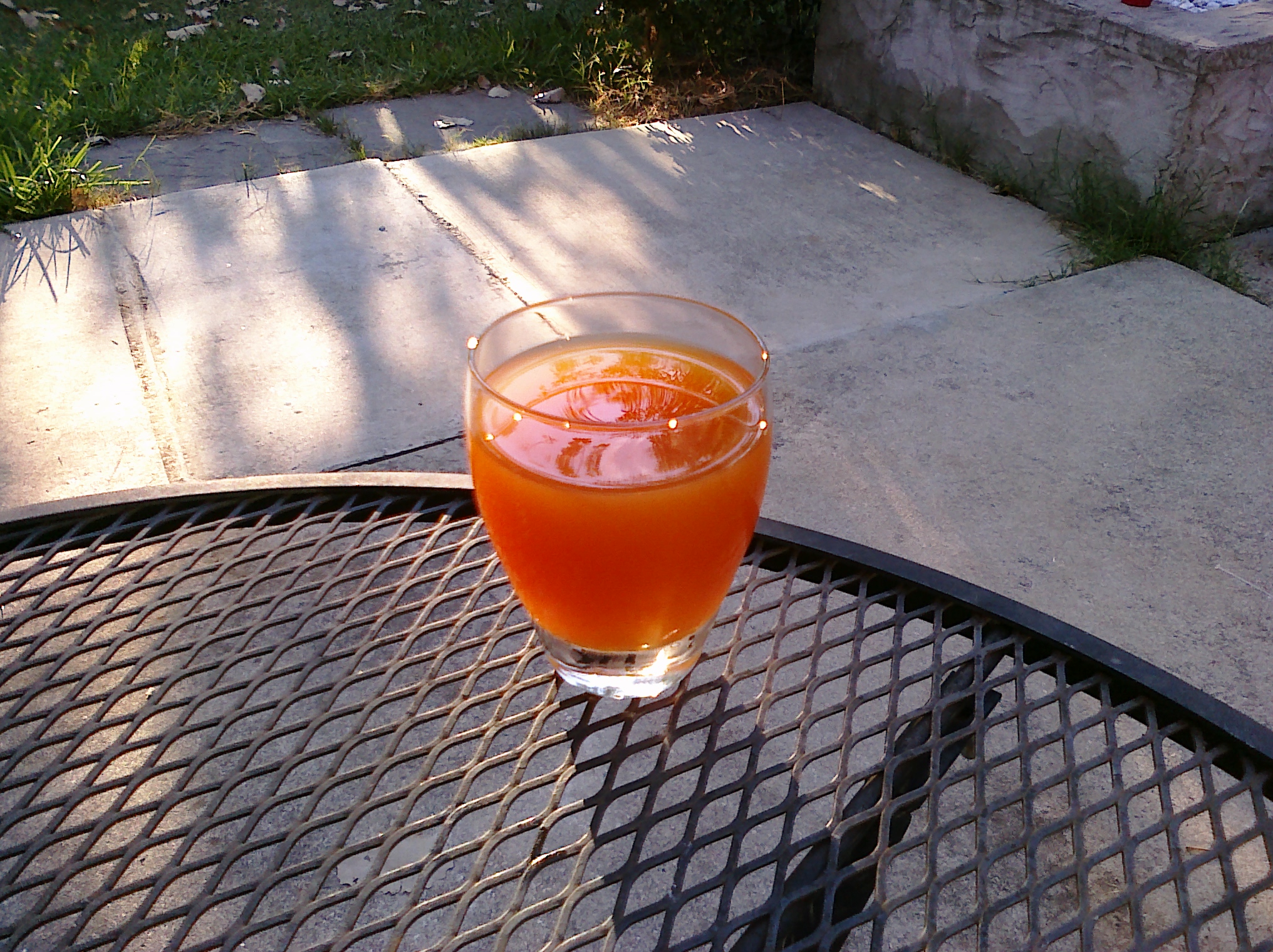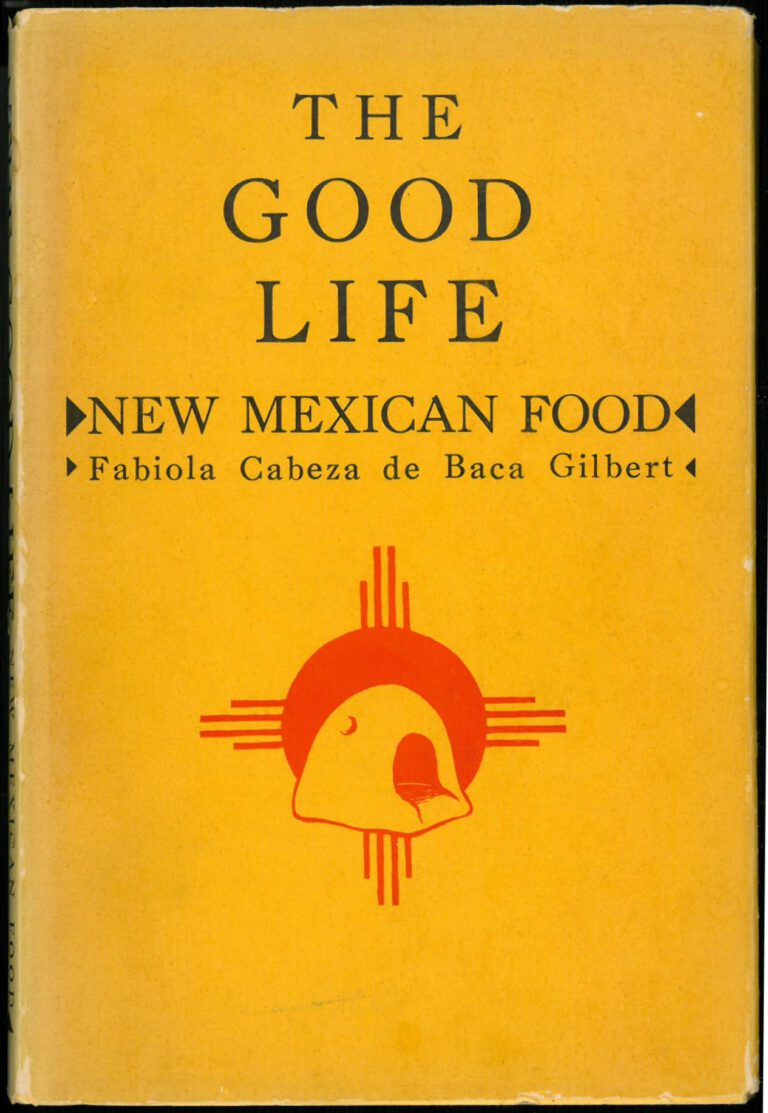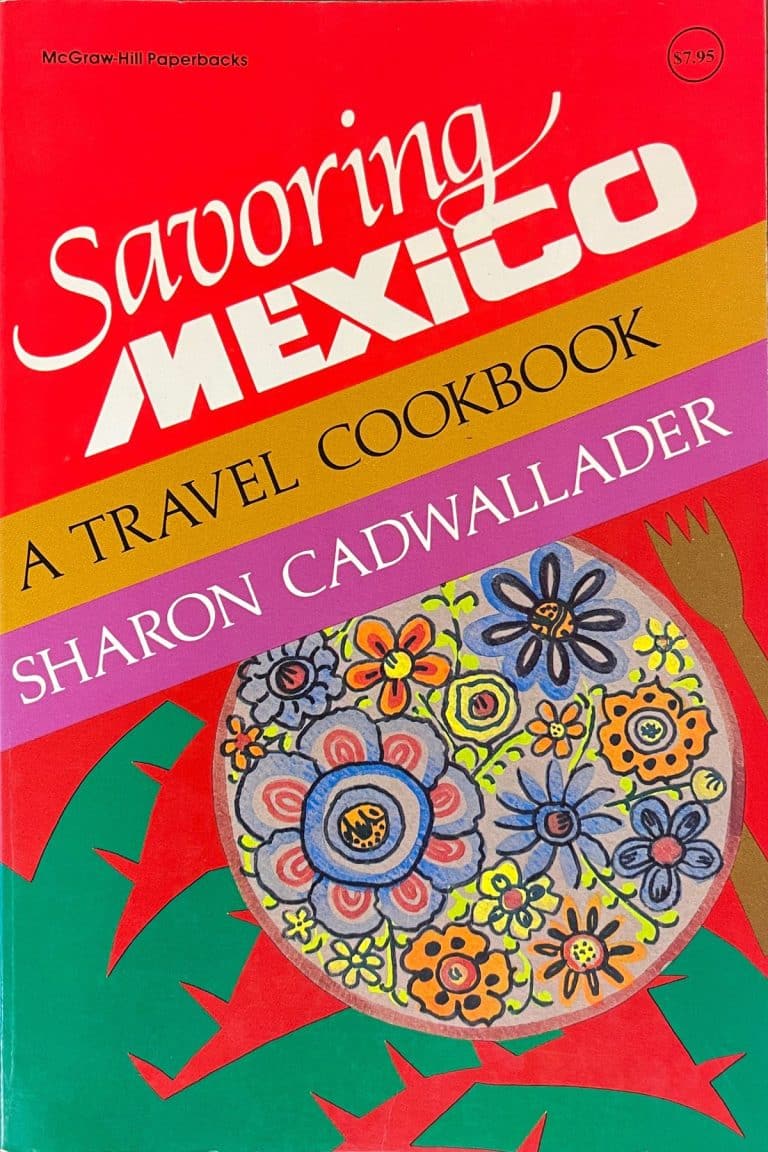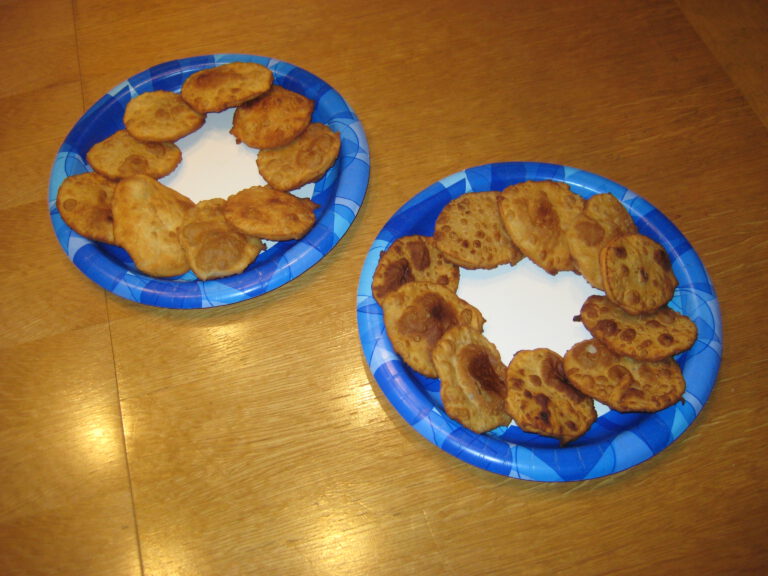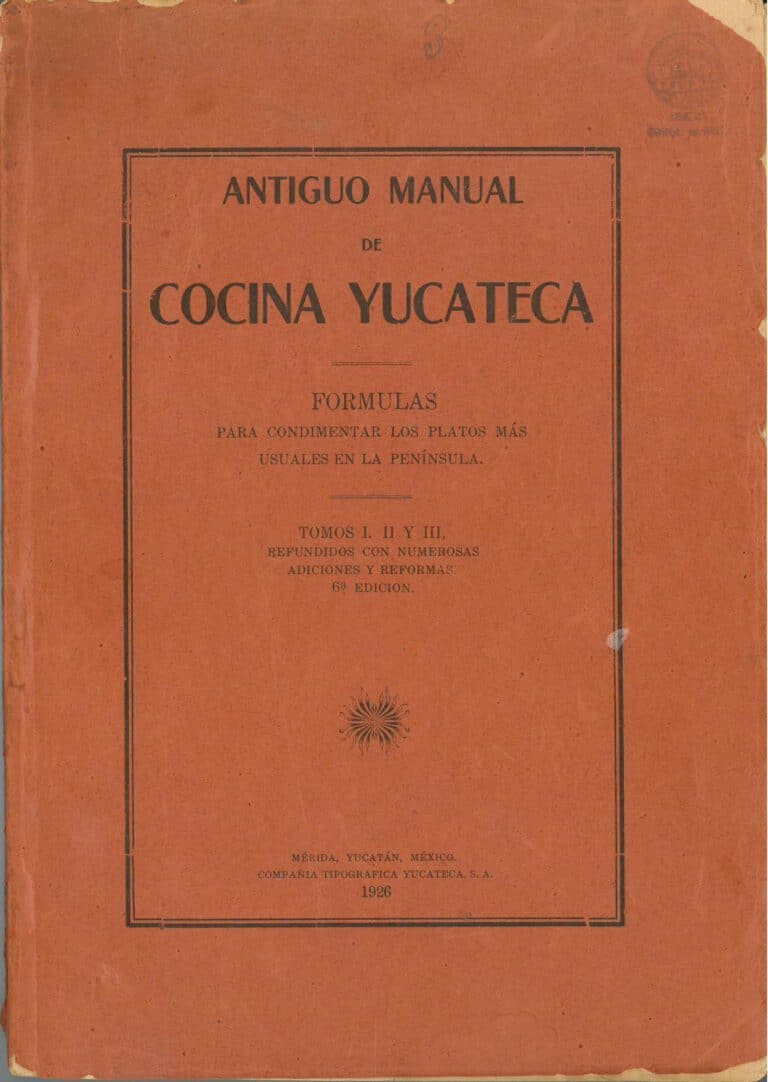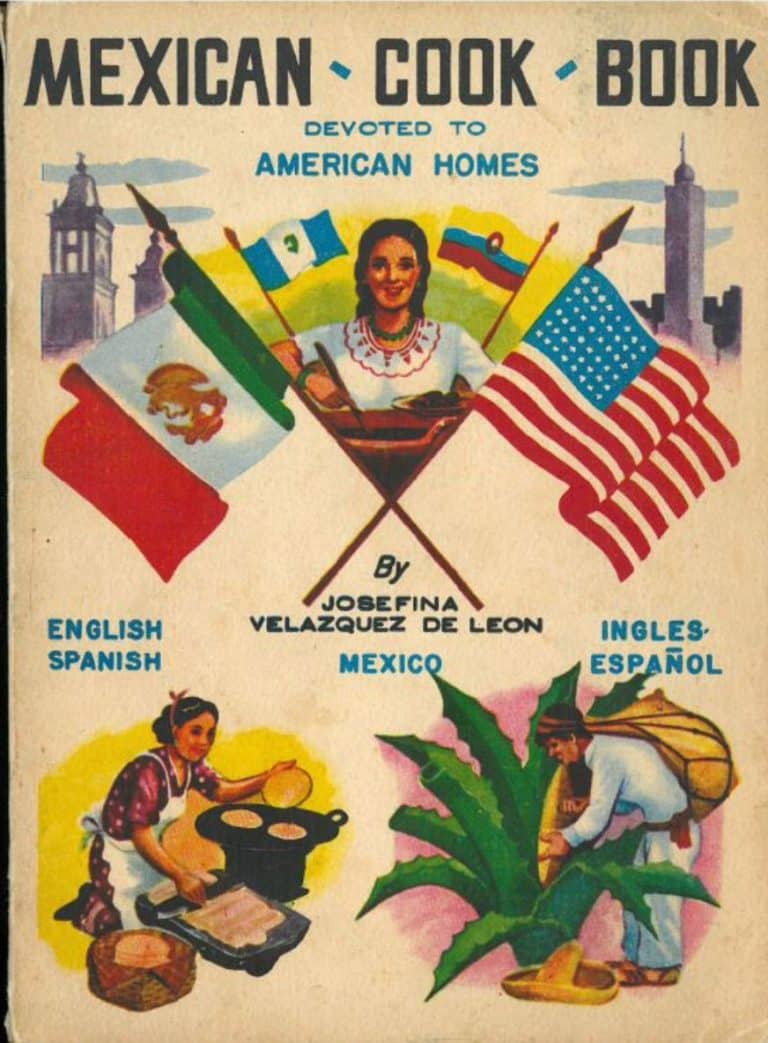Tepache 1947 (Fermented Pineapple Drink)

Enciclopedia del hogar : tercer tomo del recetario de cocina de Excelsior. [Mexico, D. F.] : Excelsior, [1947]. [TX716.M4 E53 1947]
Tepache is a drink made with the flesh and rind of a pineapple. It does have a unique taste – sweet and mildly fizzy, and served cold it is rather refreshing in this Texas heat. Though it does ferment for a couple of days, it does not actually seem to contain much alcohol – at least my batch didn’t’. You can try adding your own spices or spirits to it too, such as chili powder or tequila (I added tequila to one of my glasses and it gave me a relaxing light-headed feeling).
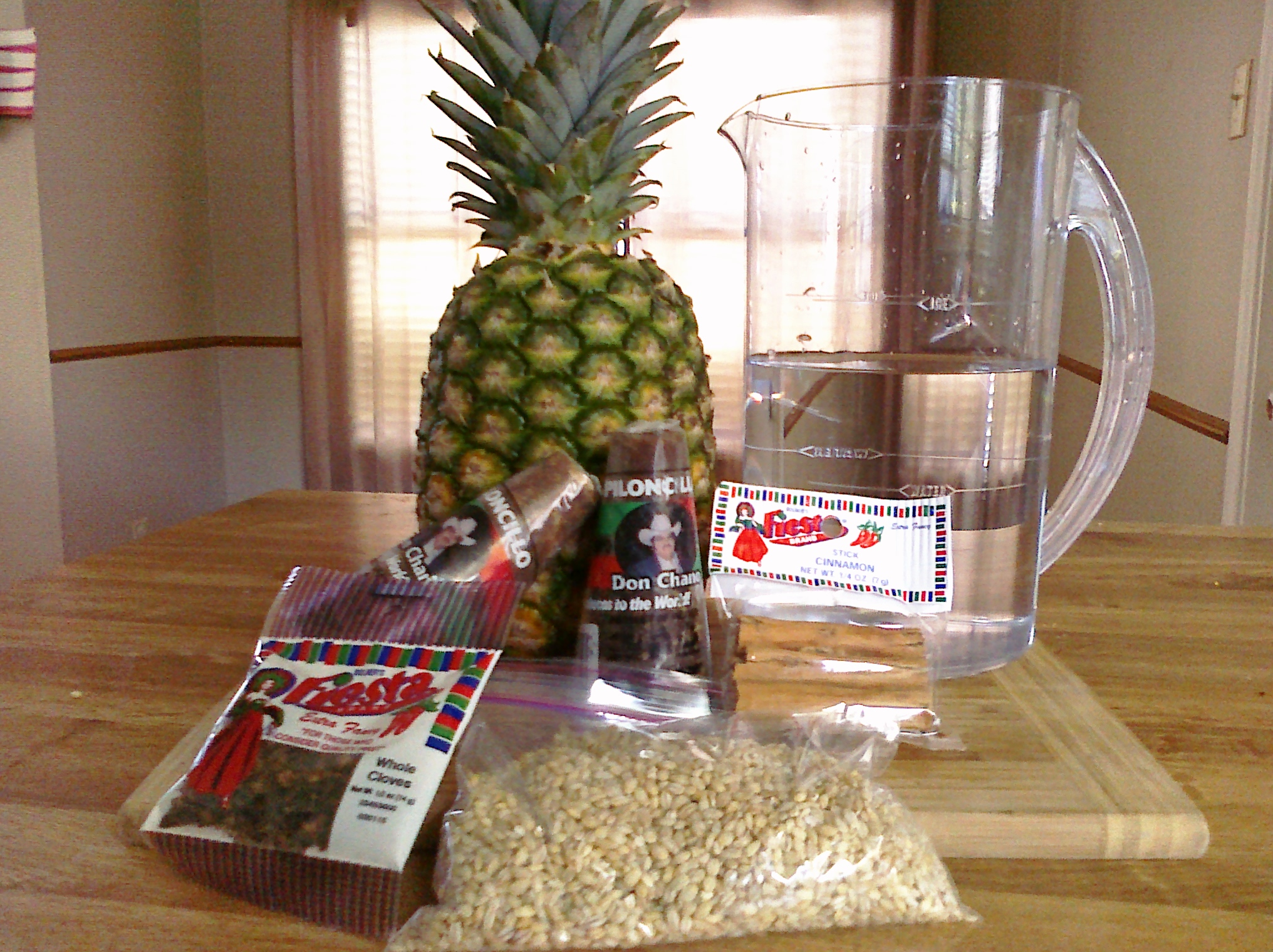 Tepache
Tepache
Piña grande 1
Cebada grande 400 gramos
Piloncillo 1 ½ kilos
Canela 1 raja grande
Clavos de especial 8
MANERA DE HACERSE: La piña se muele y se pone en tres litros de agua, con su cascara, bien tapada, la canela y los clavos; en una olla de barro; a los dos días se agrega la cebada, que se habrá puesto a hervir hasta que reviente en un litro de agua y el piloncillo; se déjà fermentar uno o dos días, según sea necesario, se pasa por una coladera fina y se sirve con hielo picado.
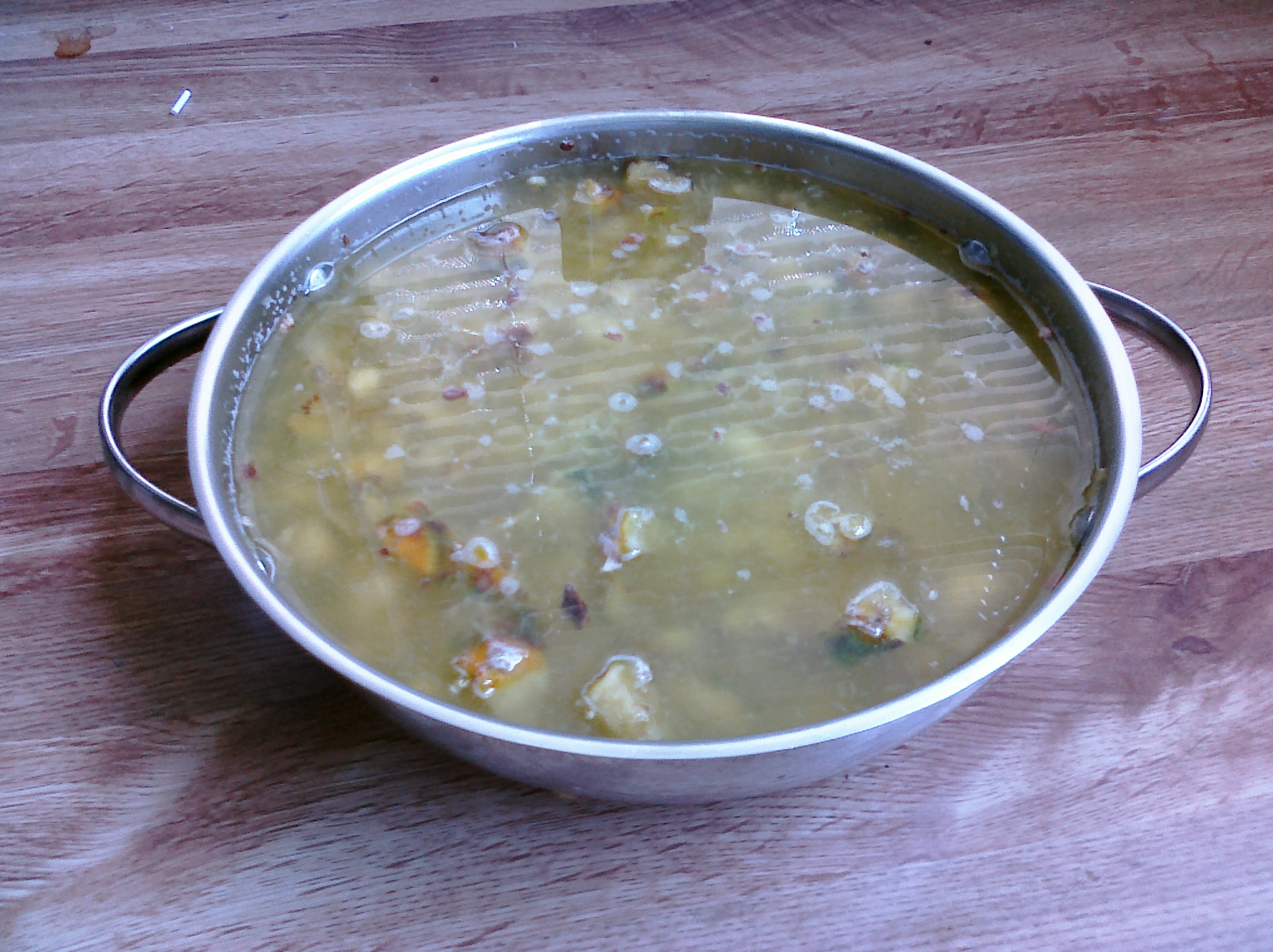 Tepache
Tepache
1 large pineapple
barley (large) – 400 grams
piloncillo – 1 ½ kilograms
cinnamon – 1 large quill
cloves – 8
HOW TO PREPARE: Crush the pineapple and place, including the rind, in a large pot; add the cinnamon and cloves; cover well. After two days, add the barley (after having boiled it in 1 liter of water) and the piloncillo to the pot; let ferment for 1 or 2 days, however much necessary. Pass through a fine colander and serve on ice.
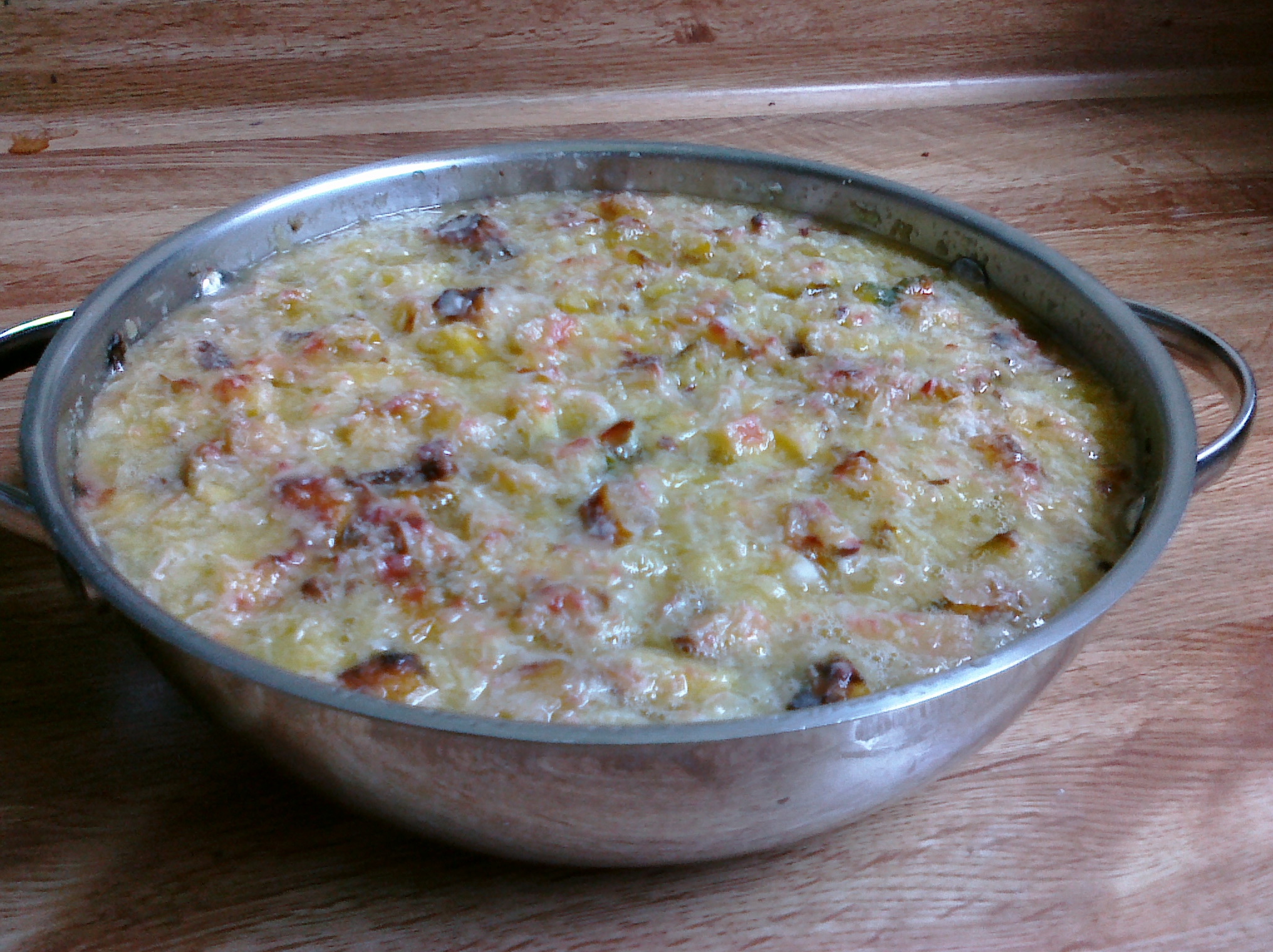 Kitchen Commentary
Kitchen Commentary
Tepache is not too difficult to prepare, but there are a couple of things you should know before-hand if you wish to try to make it yourself. First, be sure to have a large-enough pot with a tight lid. I only used half of the quantities specified above and my saucepan was barely large enough to handle it. Second, the crushing of the pineapple can be quite fun, but it would probably be easiest to use proper tools, such as a large mortar and pestle (molcajete), or a proper meat tenderizer mallet. I used a large wooden spoon, and although it was fun, it was also a bit tiring trying to pound the chunks down into what I felt was a small enough consistency. Thirdly, the instructions don’t specify exactly how long to boil the barley, so I just boiled it briefly, pretty much soon after it started getting thicker and smelling like oatmeal. Finally, grinding the piloncillo is very taxing. I first tried using a traditional cheese grater, but realized this was going way too slow. I then switched to using a small knife and sort of just “peeled” the piloncillo similar to peeling carrots. This was a somewhat faster, but still took a while. Buen provecho.

